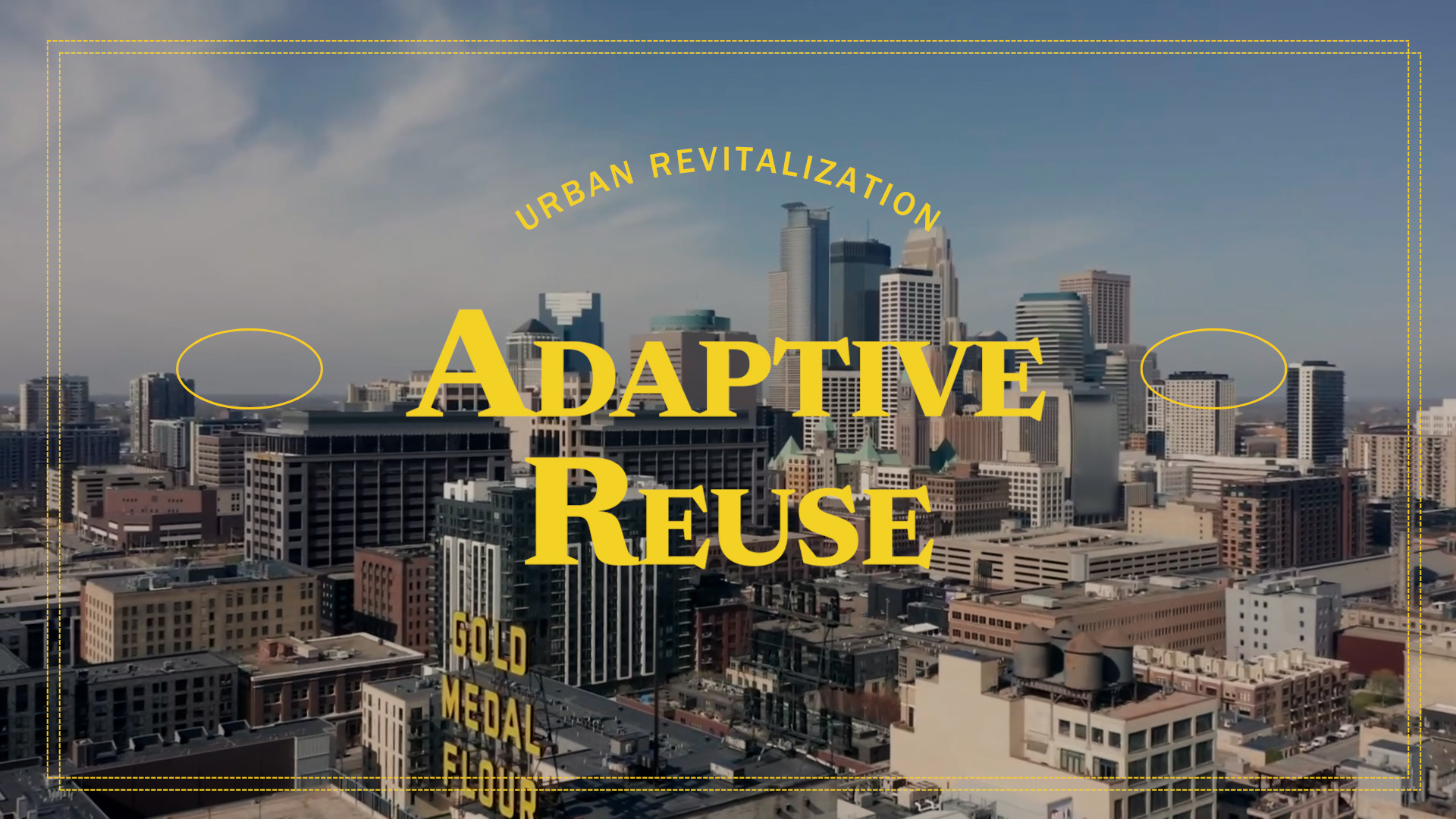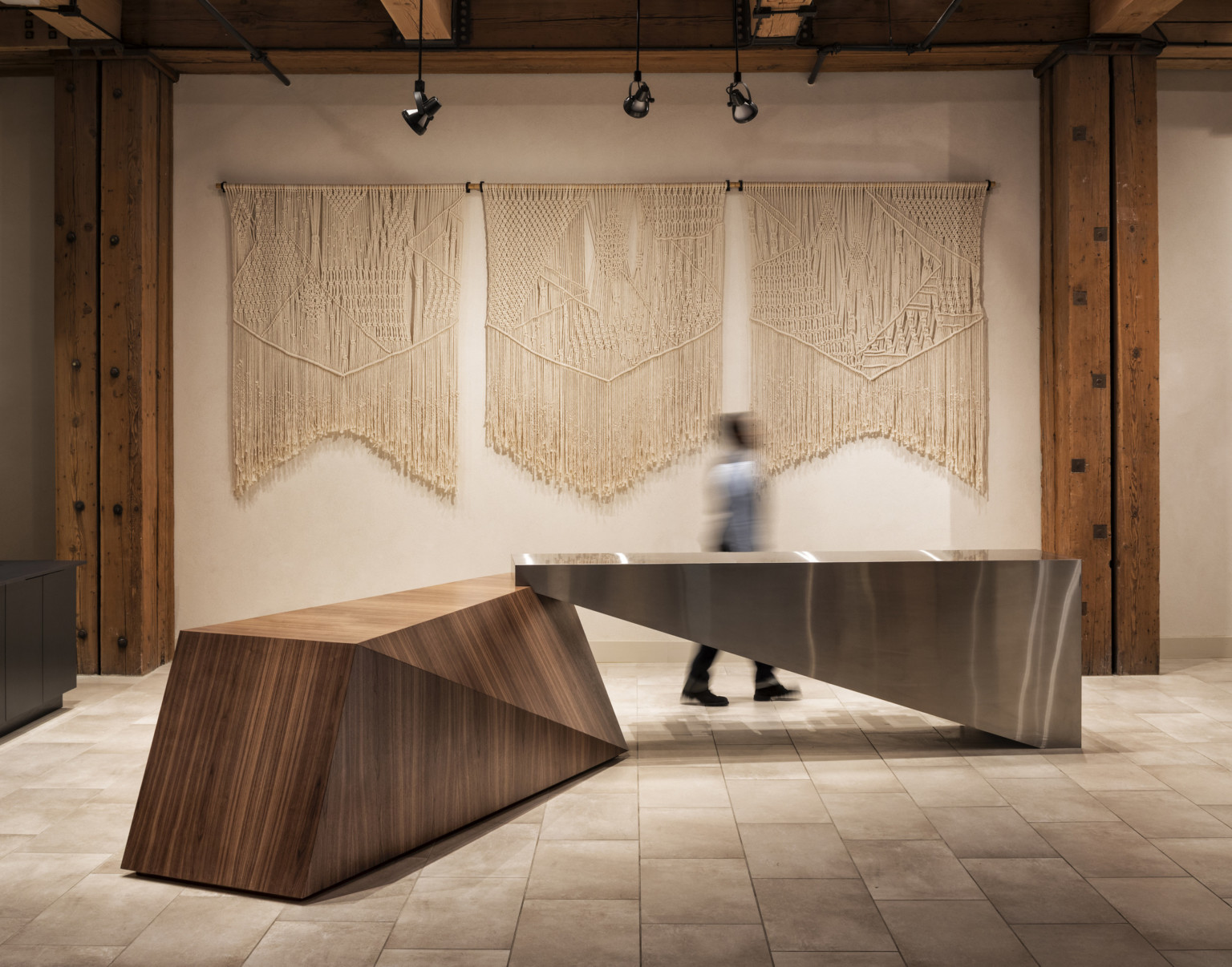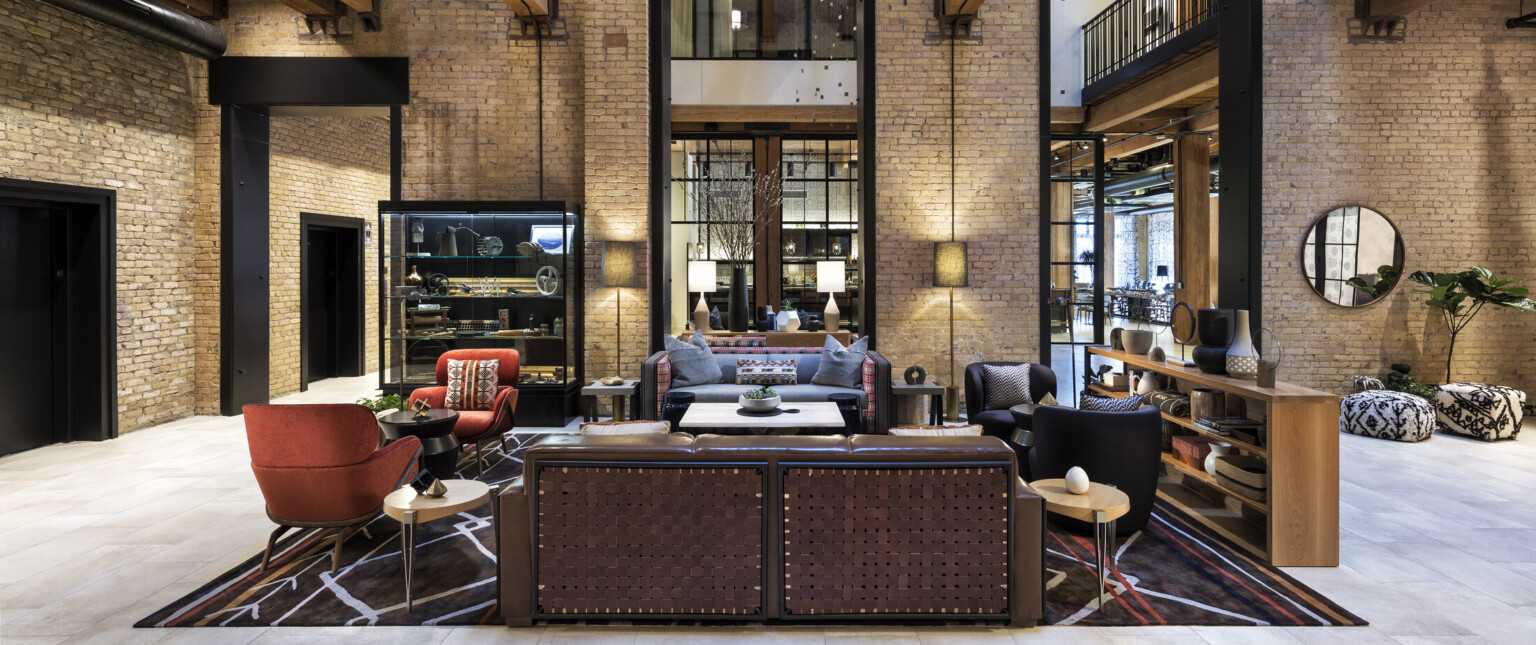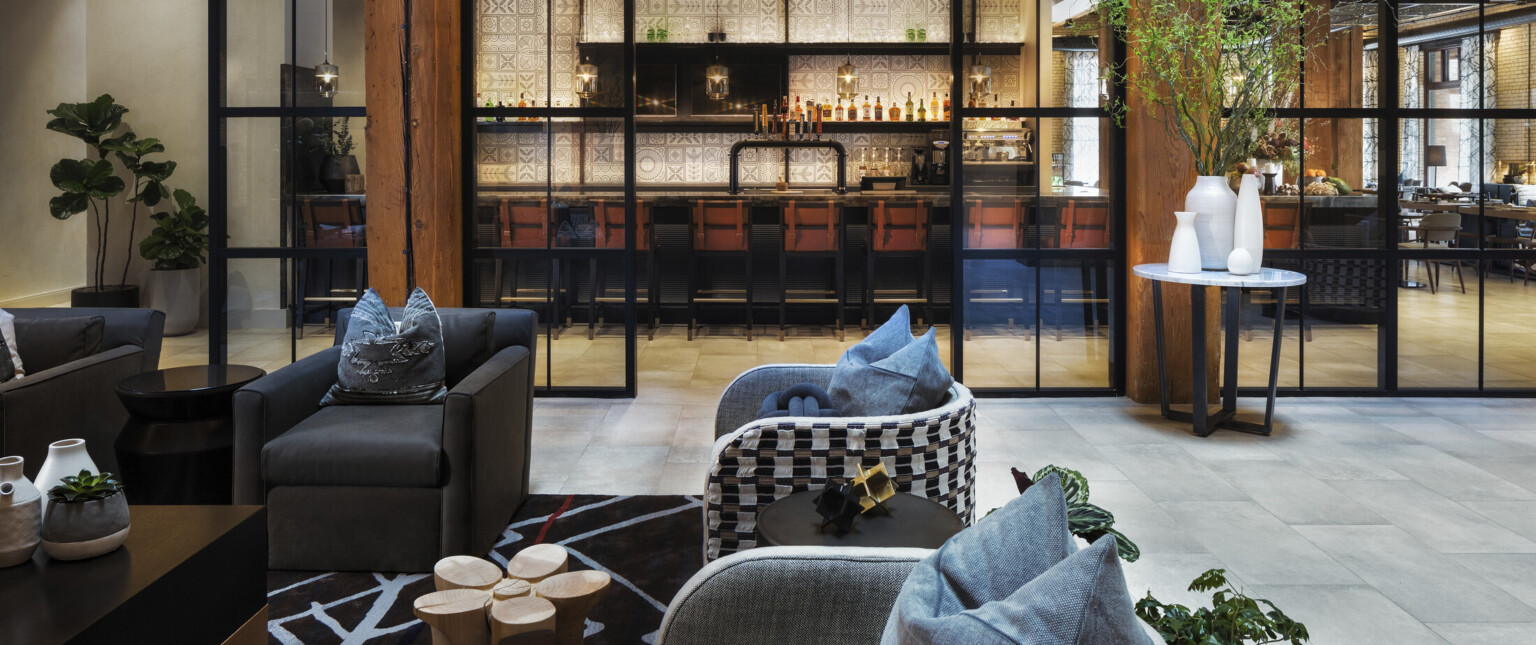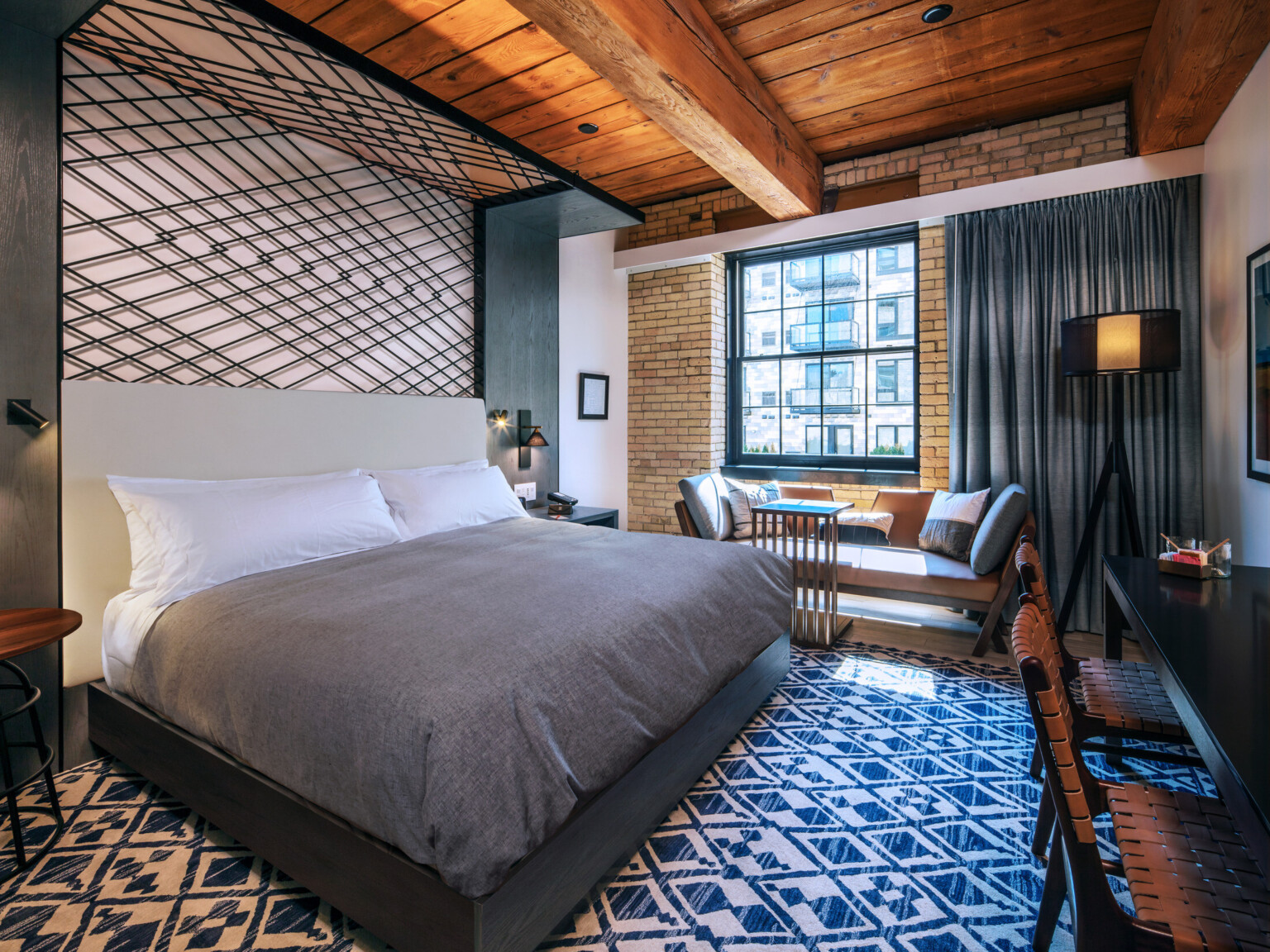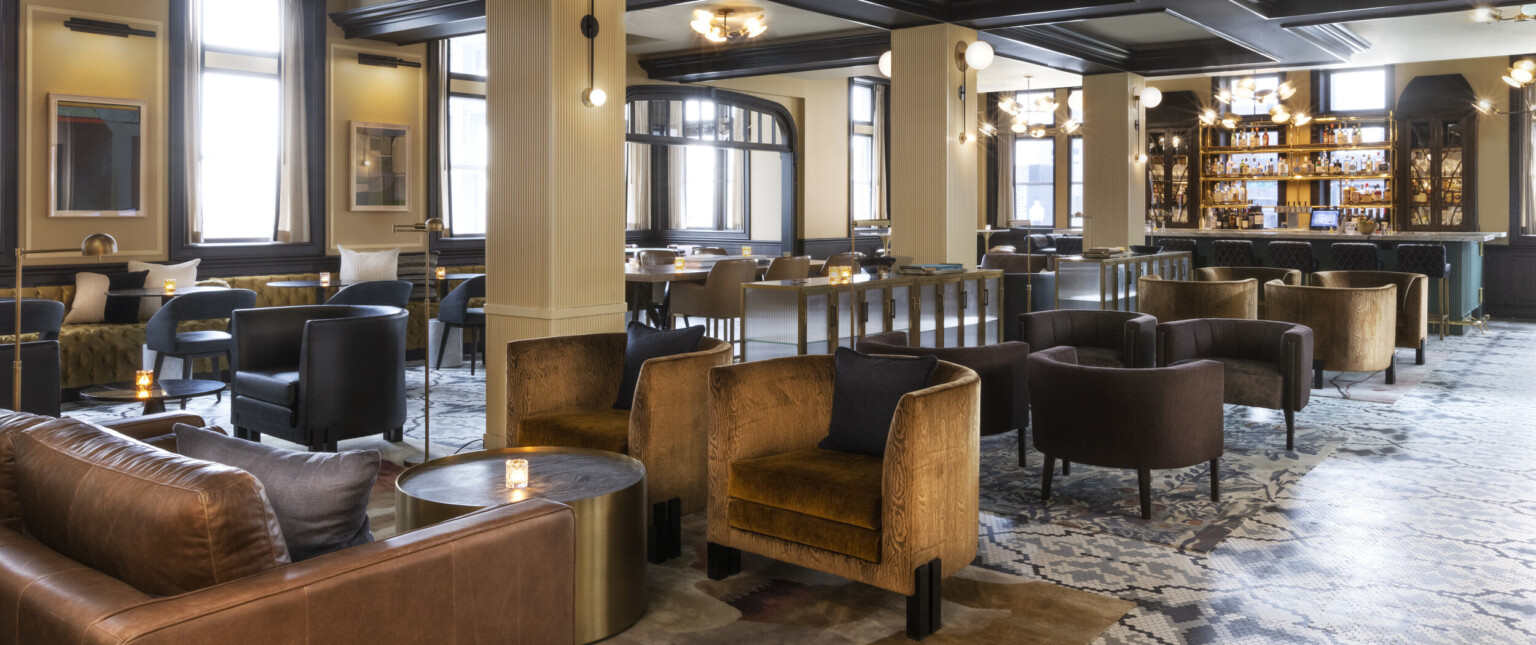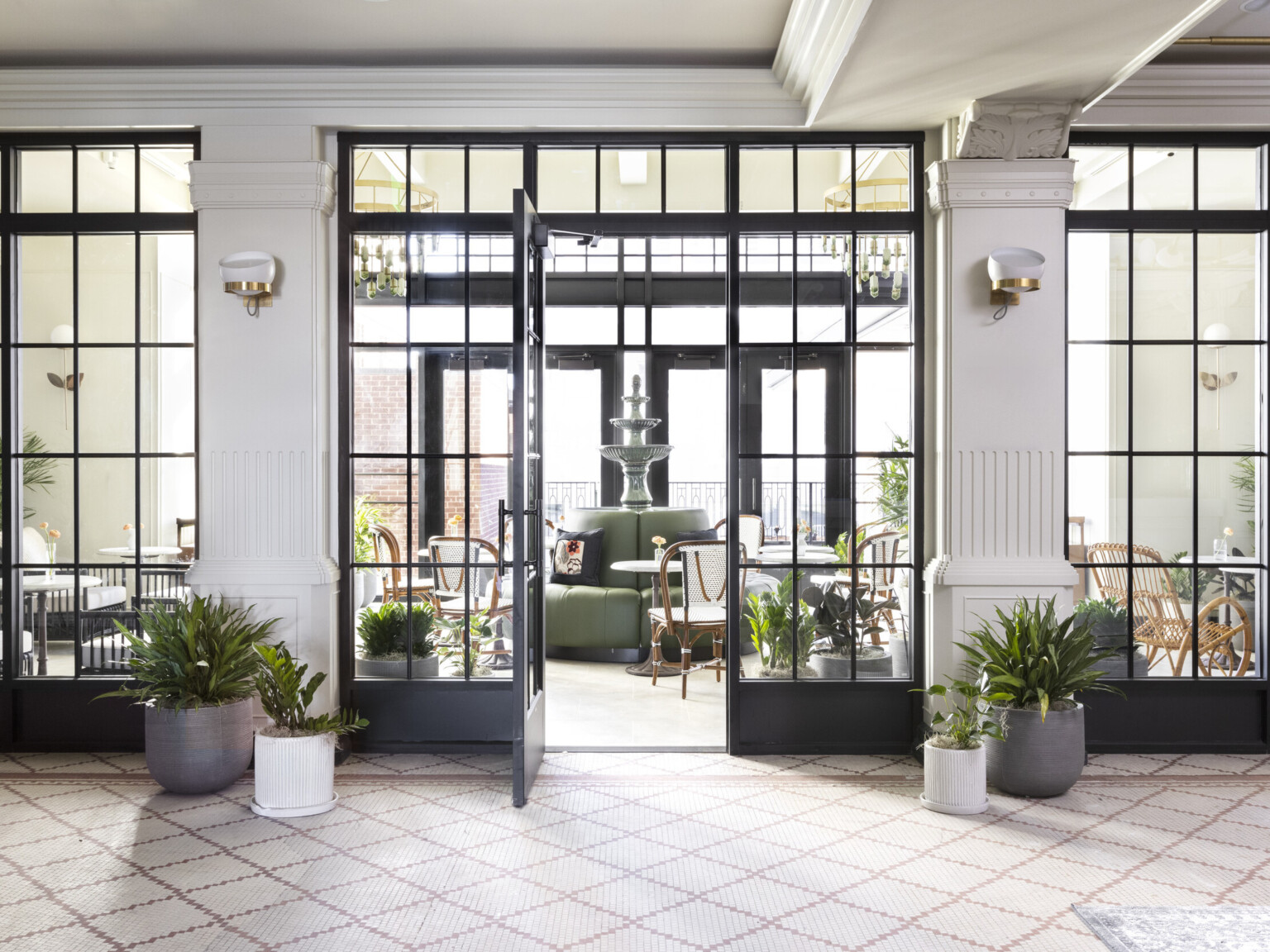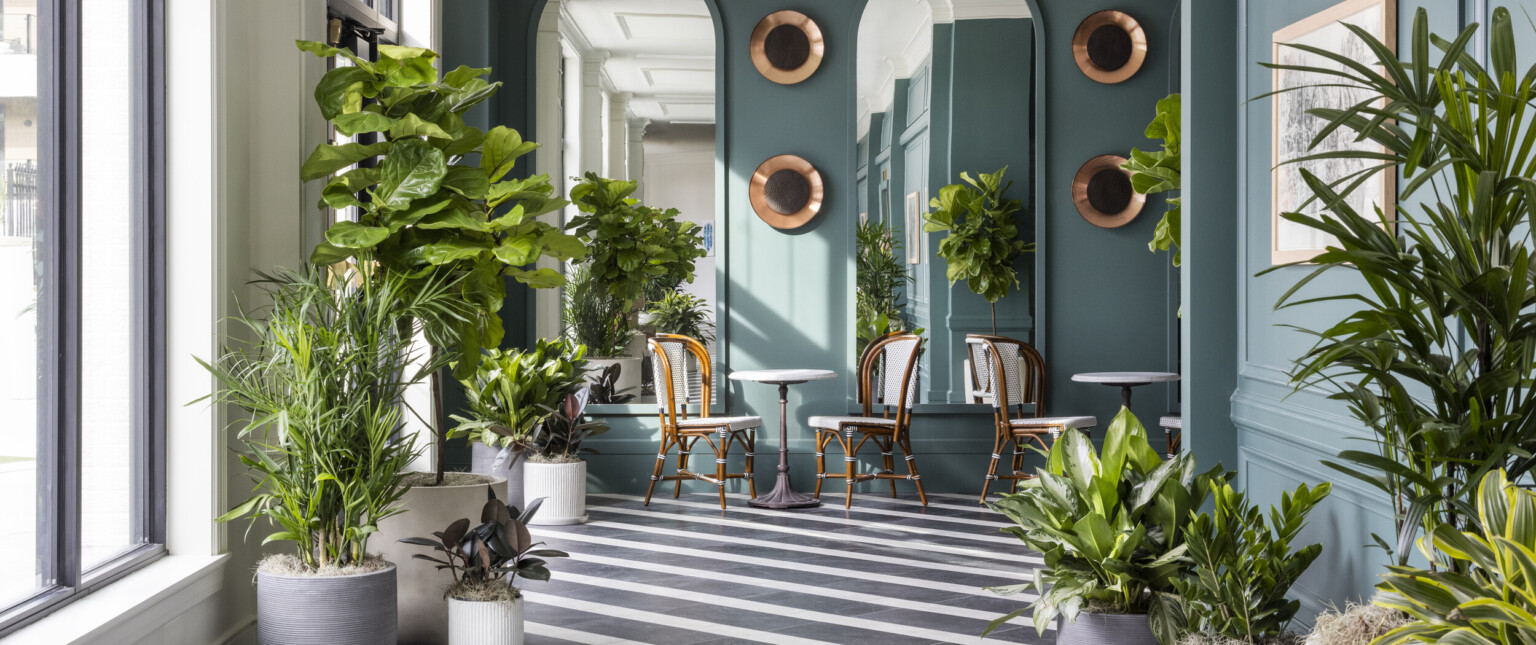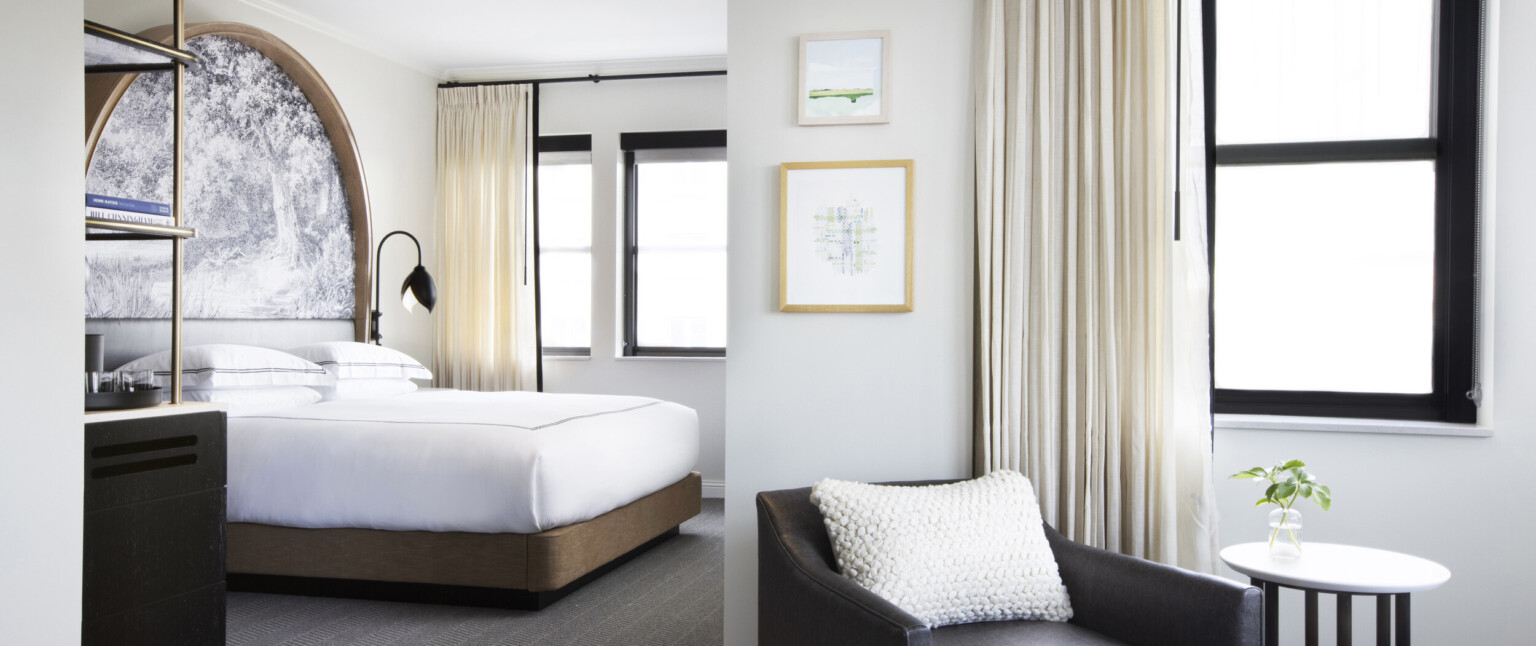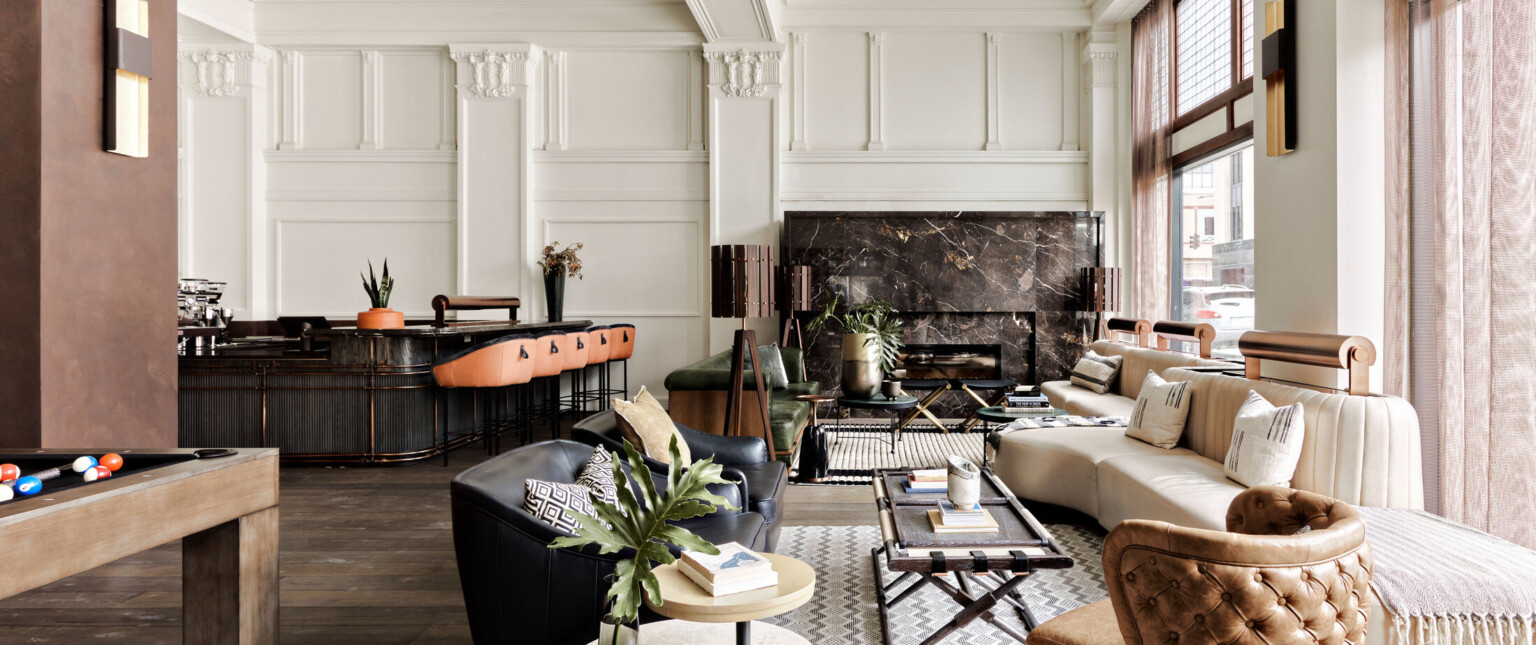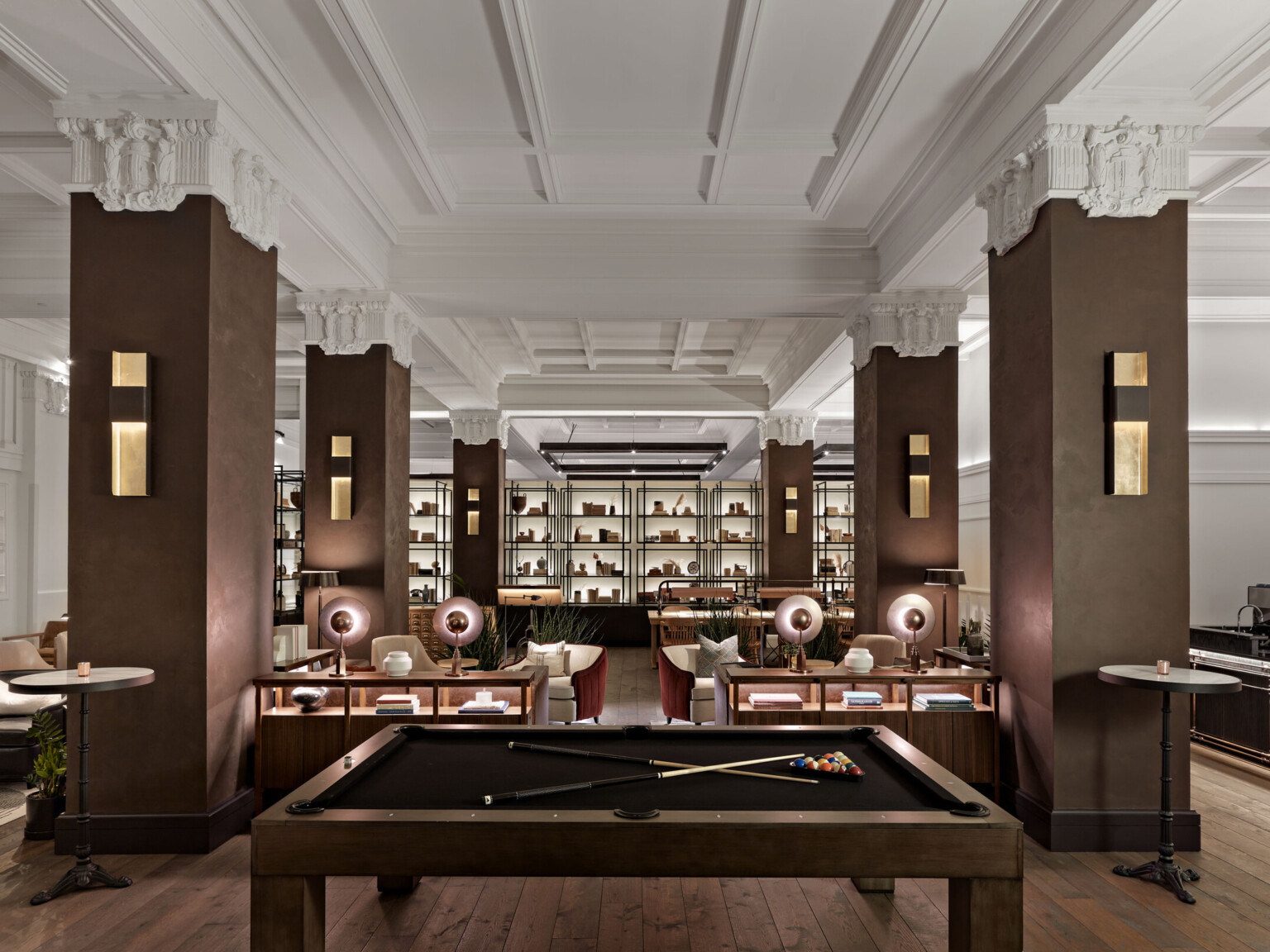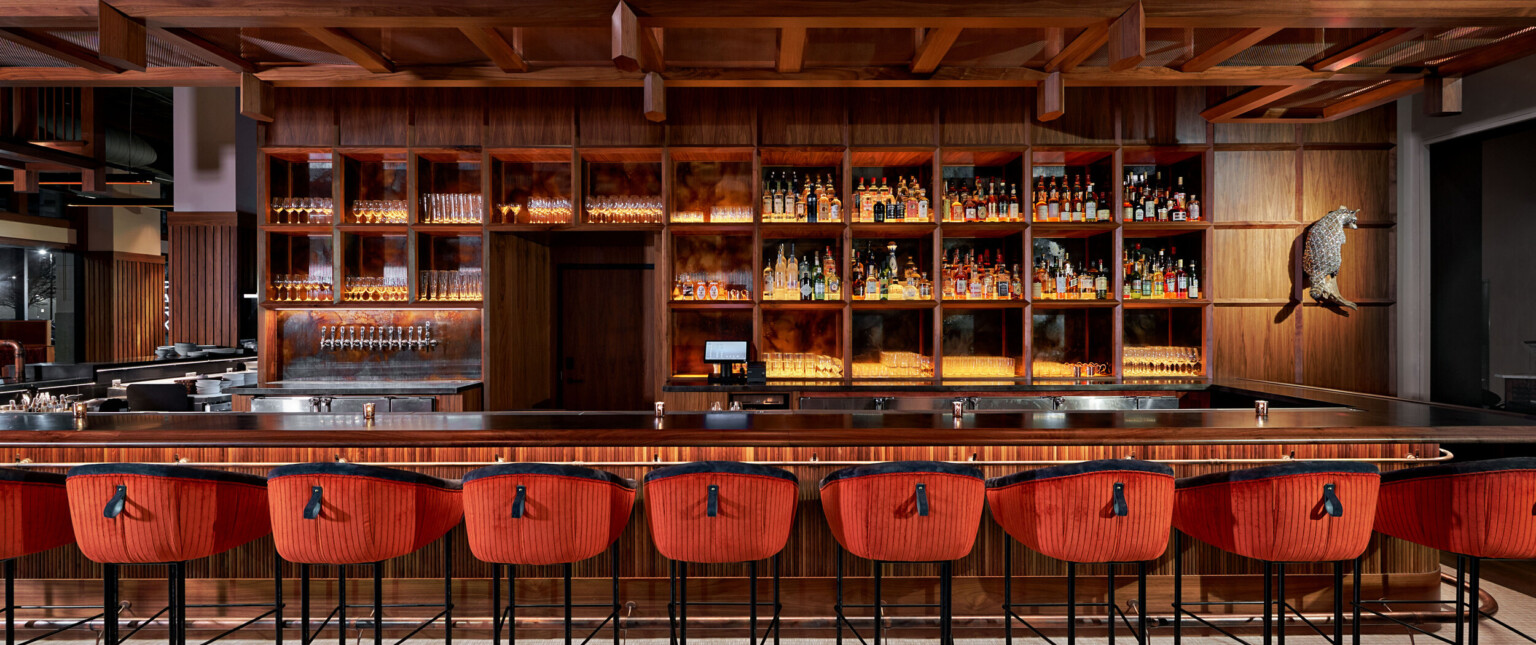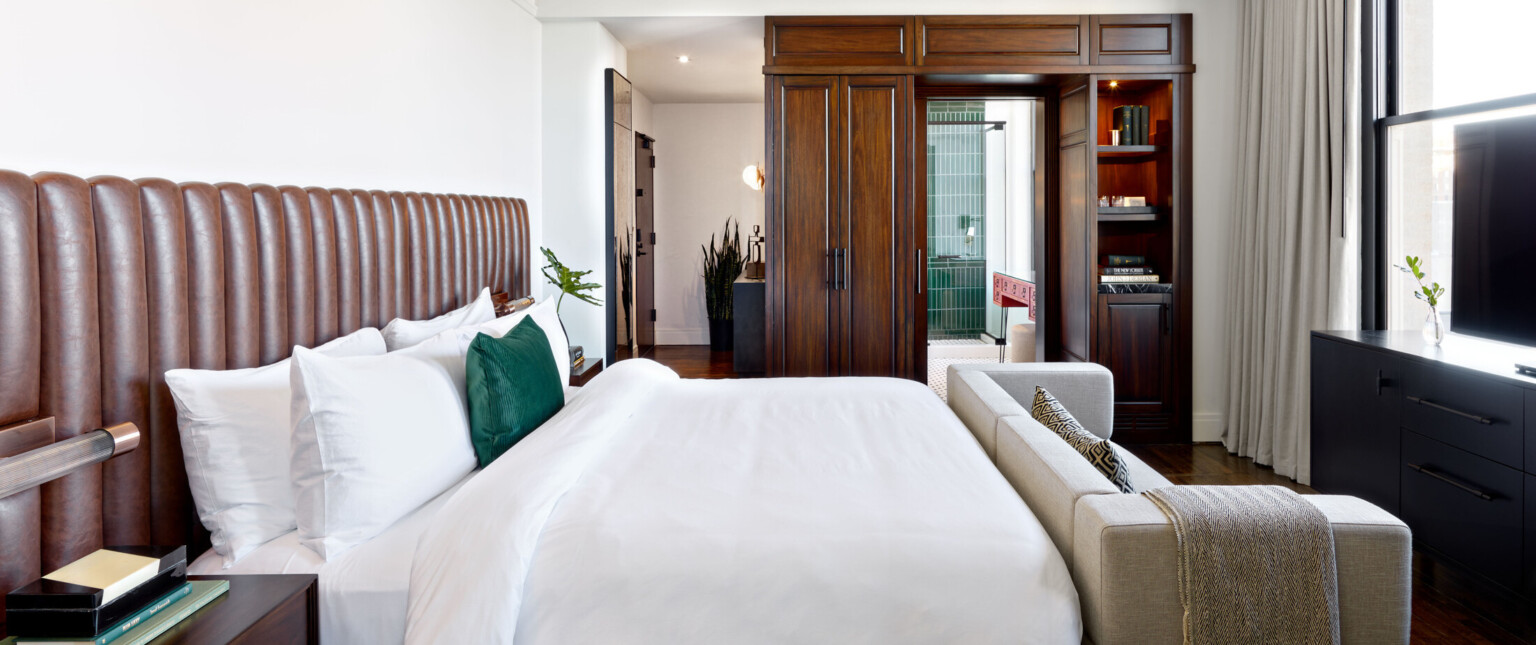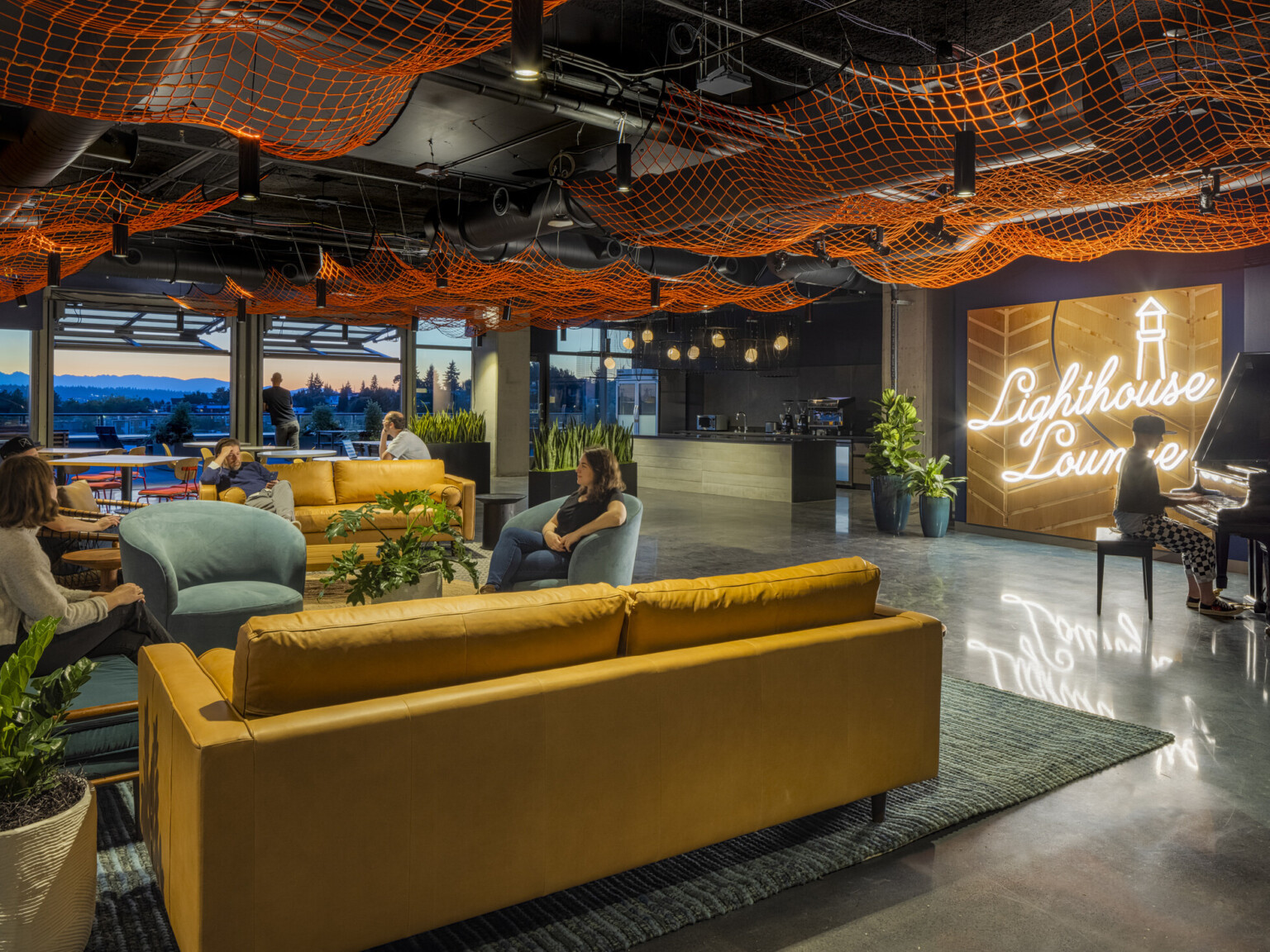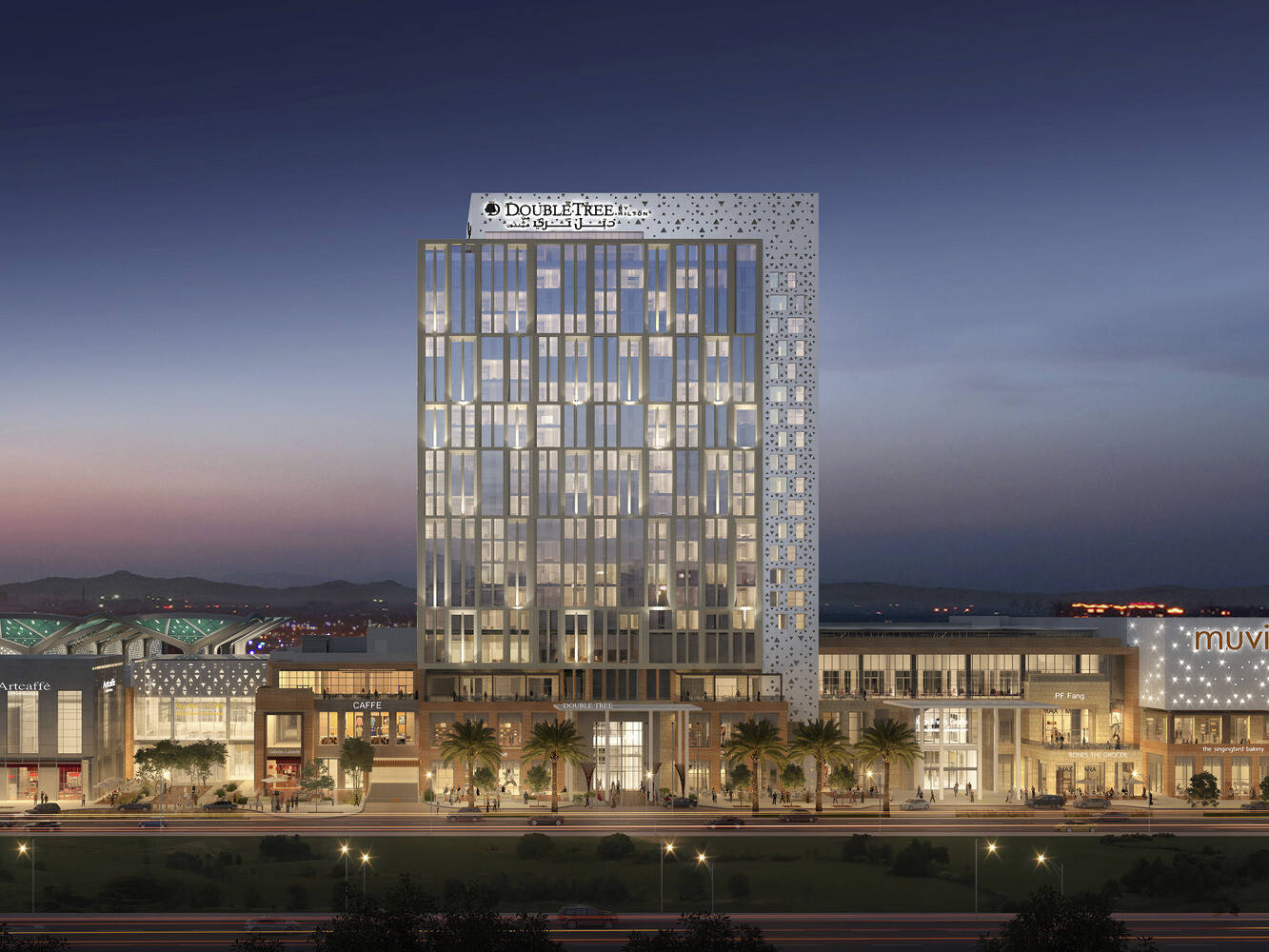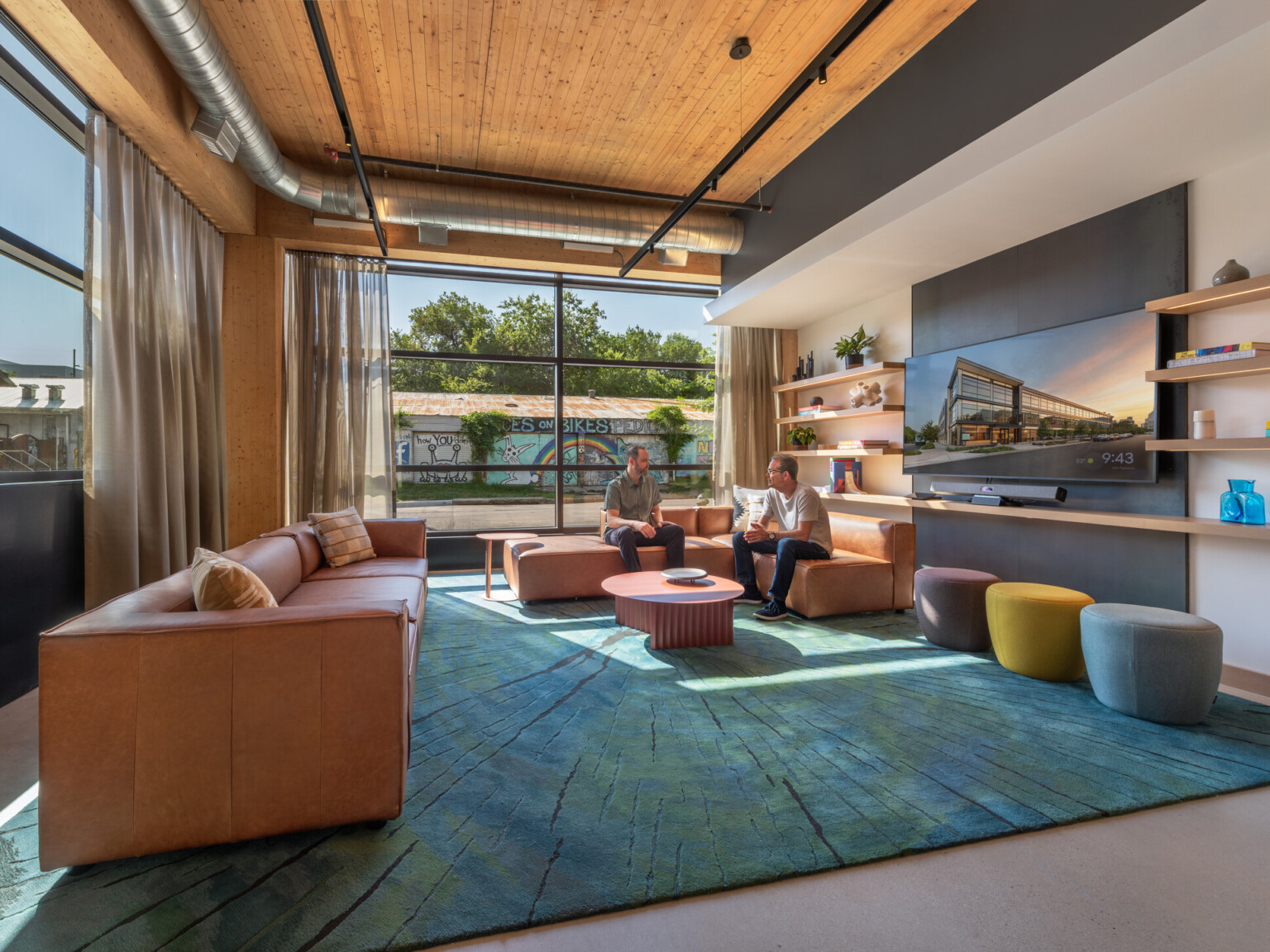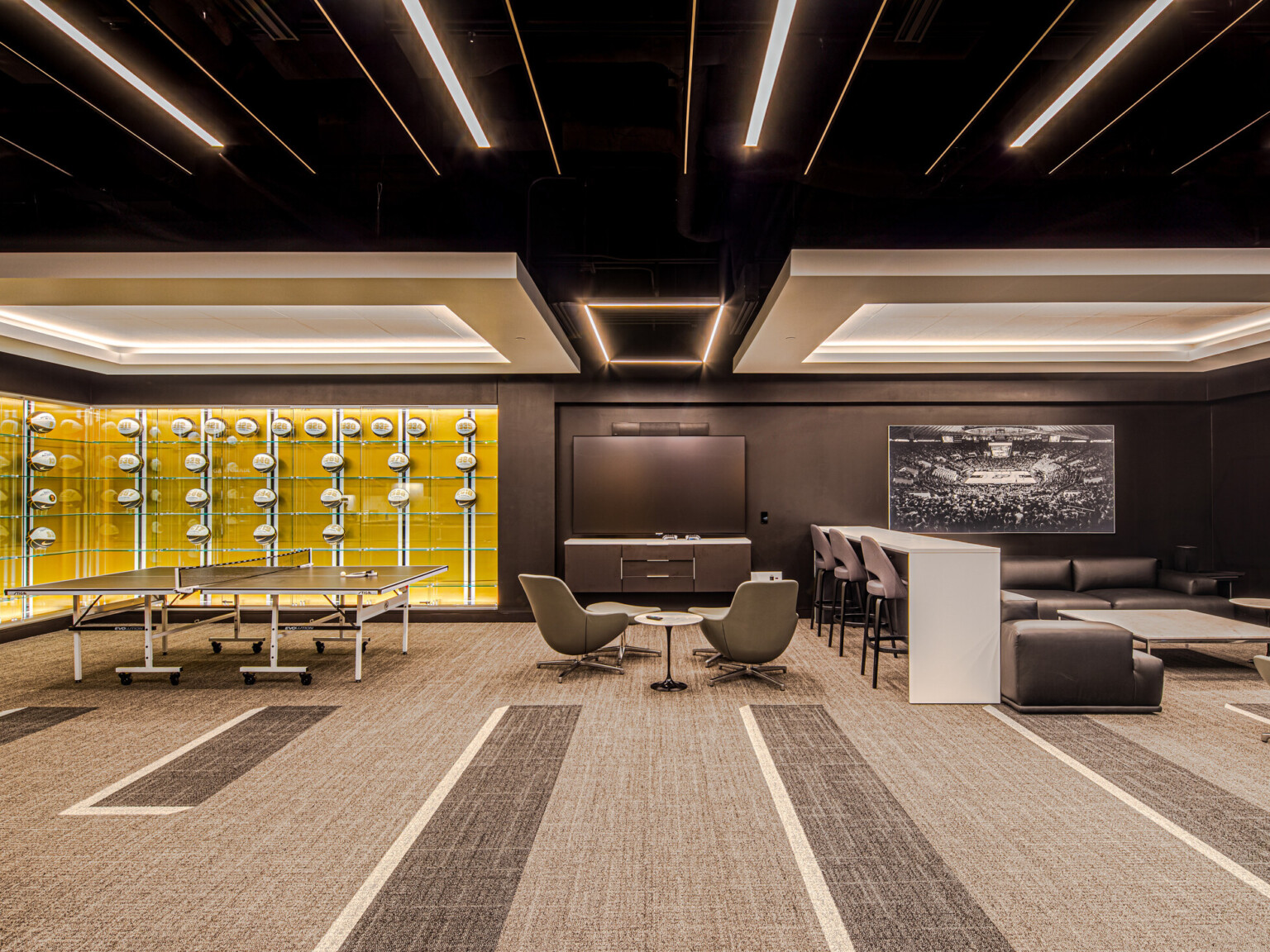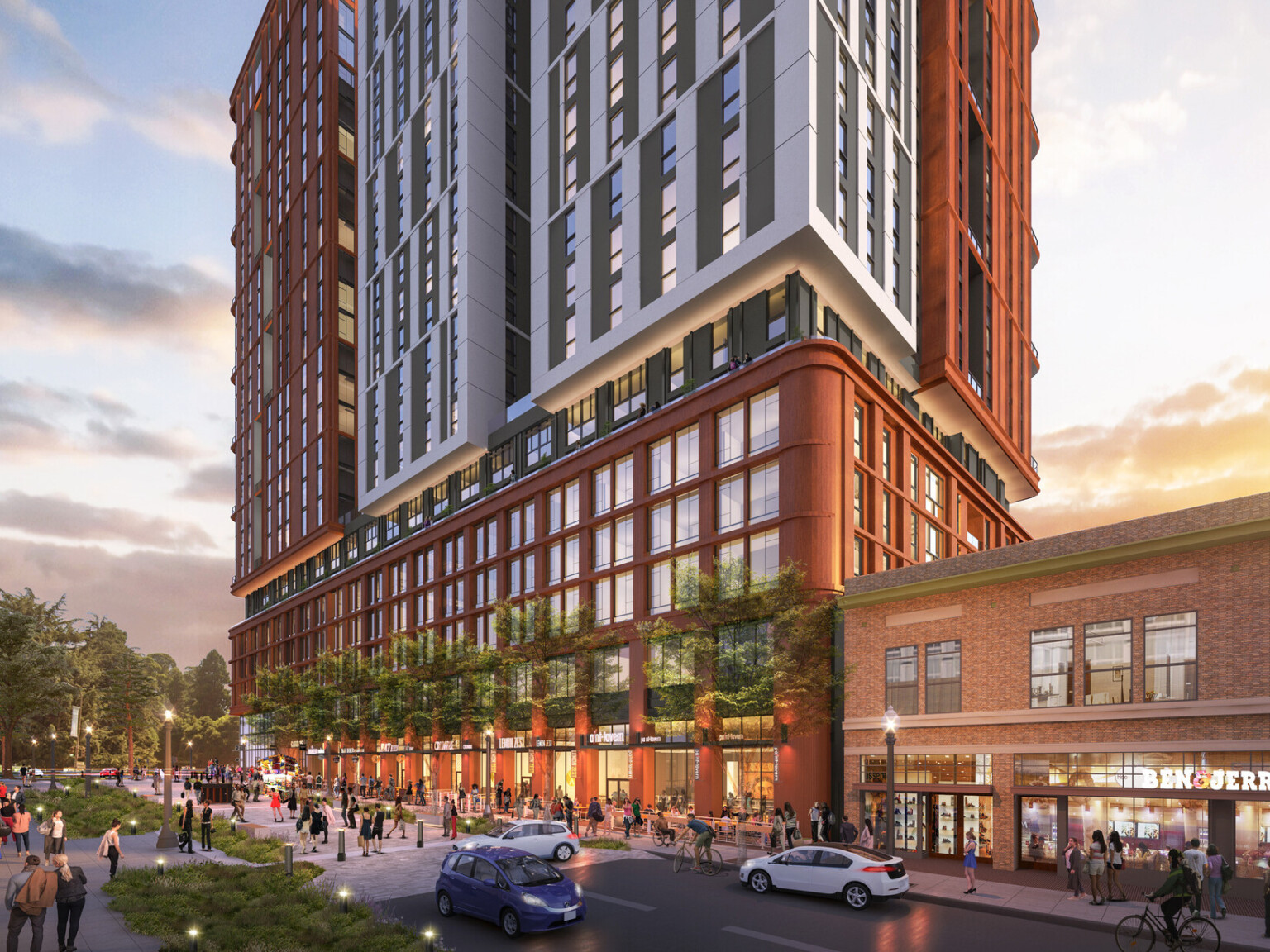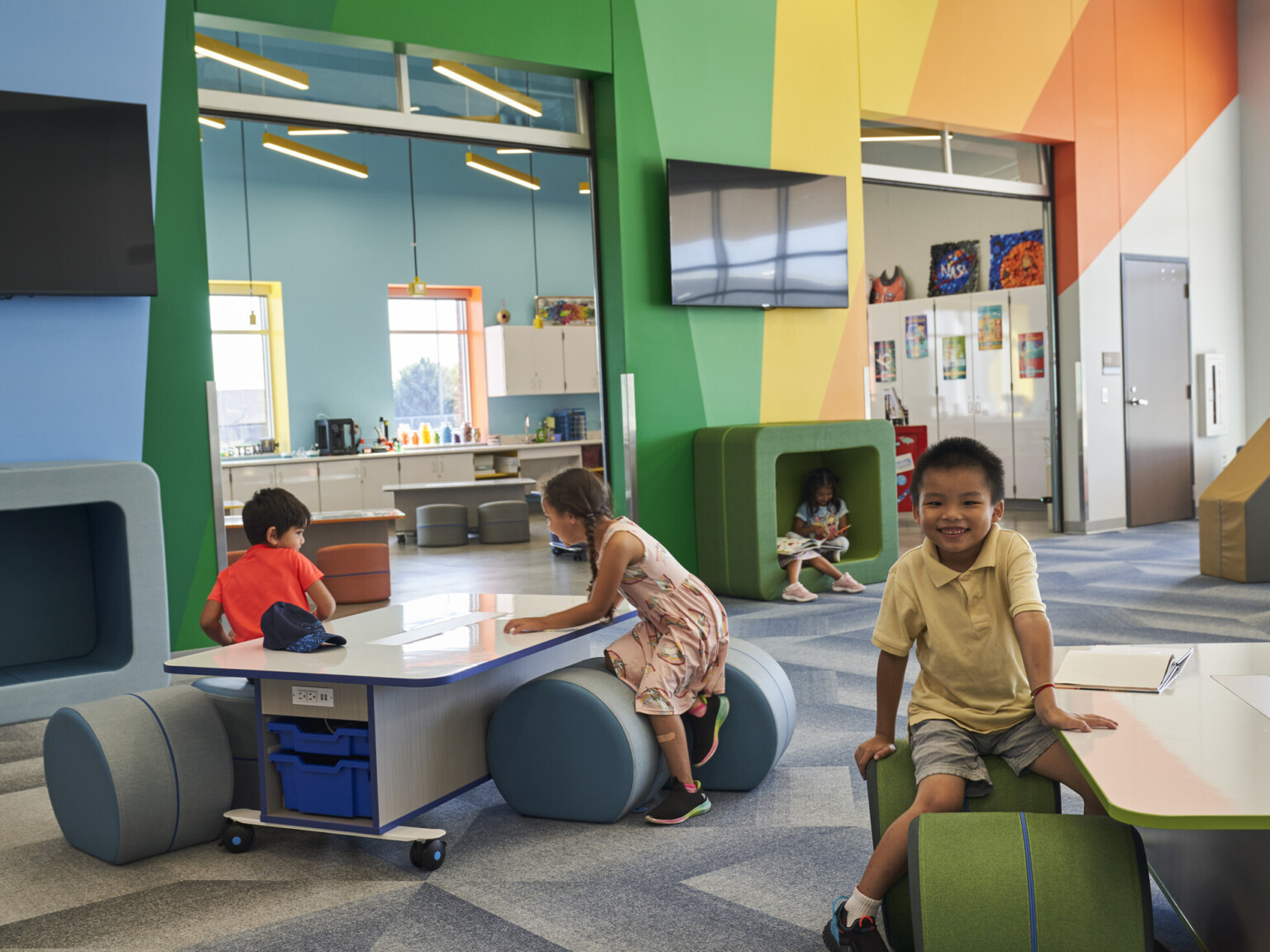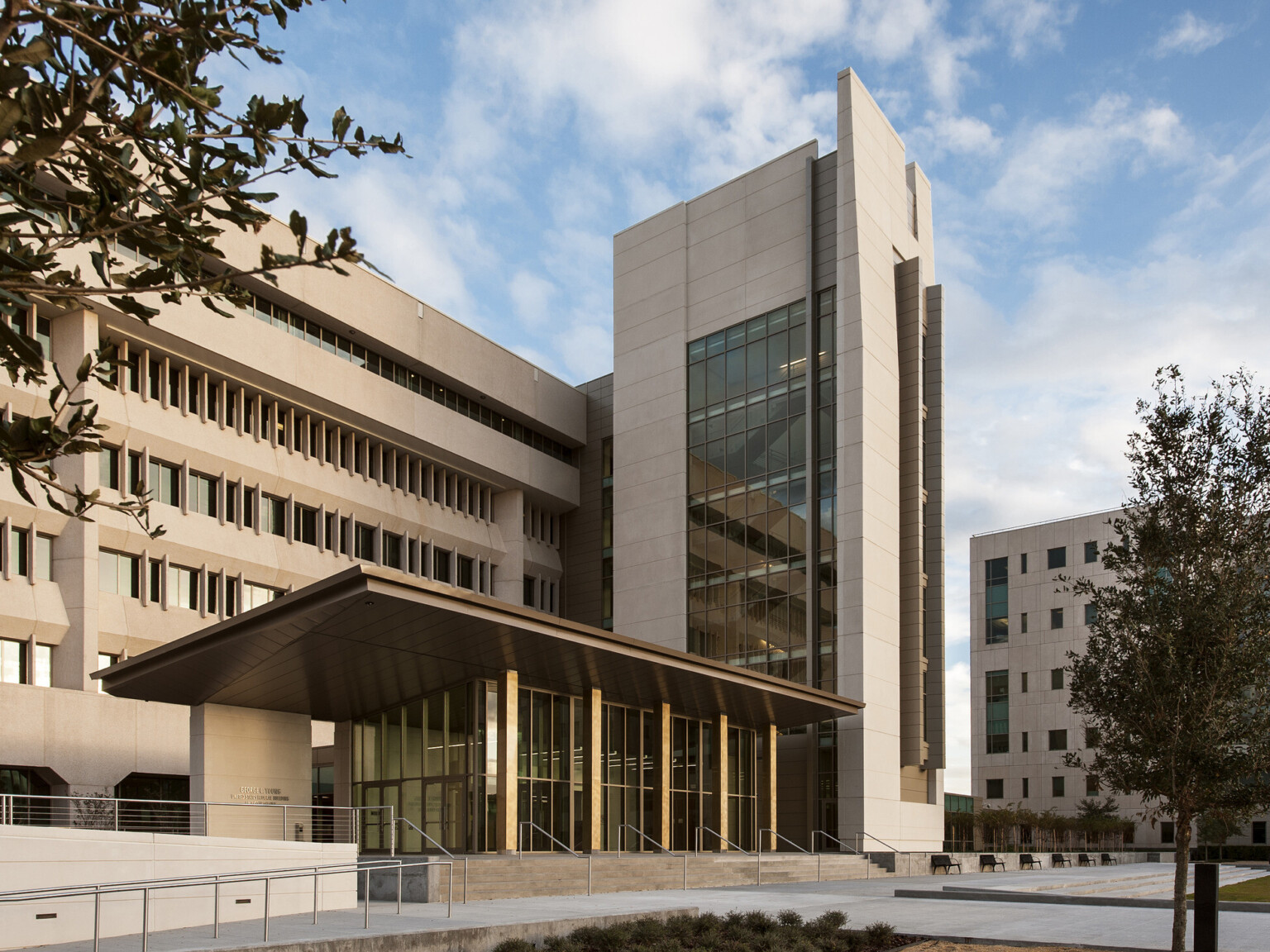PROJECT SPOTLIGHT
Canopy by Hilton Minneapolis Mill District
The historic Advance Thresher/Emerson-Newton building has been repositioned as the lifestyle brand, Canopy by Hilton Minneapolis Mill District. Built in 1900 and 1904, the pair of buildings has been on the National Historic Register since 1977. Our design highlights the past and transforms the property into a modern upper upscale property.
The interiors draw heavy inspiration from Scandinavian home-works. Abstractions of quilting and weaving are present throughout the hotel’s artwork and in its fixtures and furnishings. Intentional about creating a design that is rooted in the building’s history without feeling overtly industrial, the interior of the hotel exhibits delicate and subtle touch points, celebrating the materiality of the building.
The centerpiece of the building’s lobby is its atrium art installation, a sculpture designed to evoke the image of flour falling from a sifter and brought to life by architectural artists at Trellage-Ferrill Studio. In addition to the atrium sculpture, works from local artists are featured throughout the space that celebrate Minnesota’s natural landscape.
